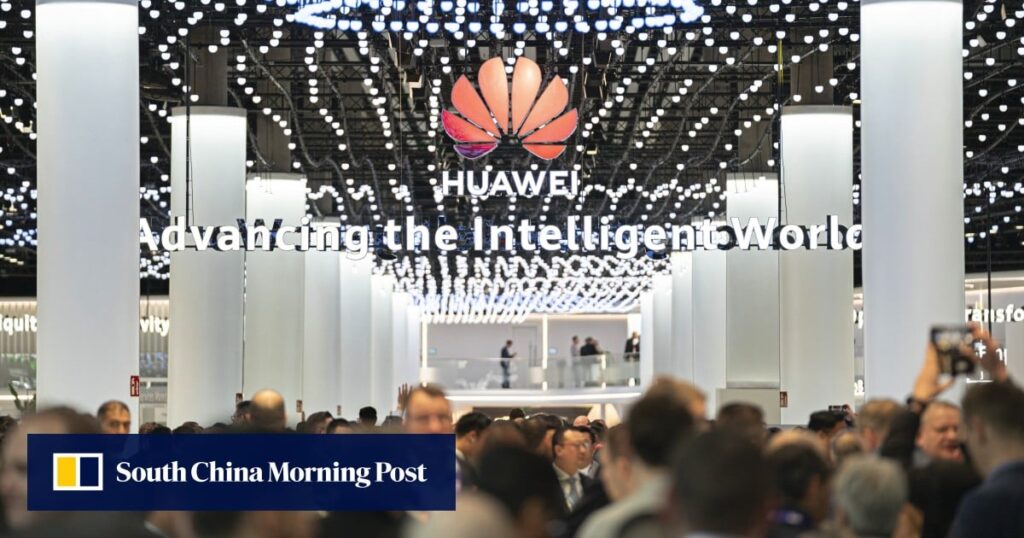Huawei declined to comment on the matter.
“They’re limited by whatever semiconductor processing technology they have, but they’ll still be able to put many of these chips together to make very large systems,” Huang said.
Amid increased focus on generative AI in the past year and tougher US sanctions, Huawei and SMIC have allocated more capacity to AI chips, according to a Reuters report last month.
A GPU distributor, who declined to be named because of the sensitivity of the matter, said the Ascend 910B is “available for order, but supply is really tight at the moment”.
Huawei, ZTE showcase AI capabilities at MWC Barcelona amid industry transformation
Huawei, ZTE showcase AI capabilities at MWC Barcelona amid industry transformation
A server used for AI training and embedded with eight Ascend 910B cards costs around 1.5 million yuan (US$208,395), which is roughly in the same range as A100 server prices in black market channels. Joe also declined to be named, according to a separate person familiar with the matter.
Many analysts and industry professionals are reluctant to comment on the showdown between Nvidia and Huawei, although they point out that the American chip designer has depth in GPUs and its software ecosystem benefits from CUDA. , is a computing platform that allows developers to harness the full potential of semiconductors. .
“CUDA is sticky, Nvidia has done all the hard work themselves and is reaping the benefits,” said Brian Colello, technology equity strategist at Morningstar. “Huawei and its software partners will need to build a comparable ecosystem. [to Nvidia’s CUDA] When it comes to tools for building AI models.
SMIC, Huawei among top recipients of Chinese government funding this year
SMIC, Huawei among top recipients of Chinese government funding this year
Despite lagging behind CUDA’s 2 million-strong list of registered developers, Huawei has its proprietary Compute Architecture for Neural Networks, a platform that combines Ascend hardware and software, to unlock AI computing power. is important for
Colello said Huawei will have to do the same. [big] Investing in mainland China to strengthen its software capabilities. He added that other companies will probably work on software libraries, while Huawei focuses on chip design.
“Huawei’s strength is not in the software stack,” said one Shanghai-based tech investor, requesting anonymity. “U.S. sanctions have limited chip performance and production output.”
